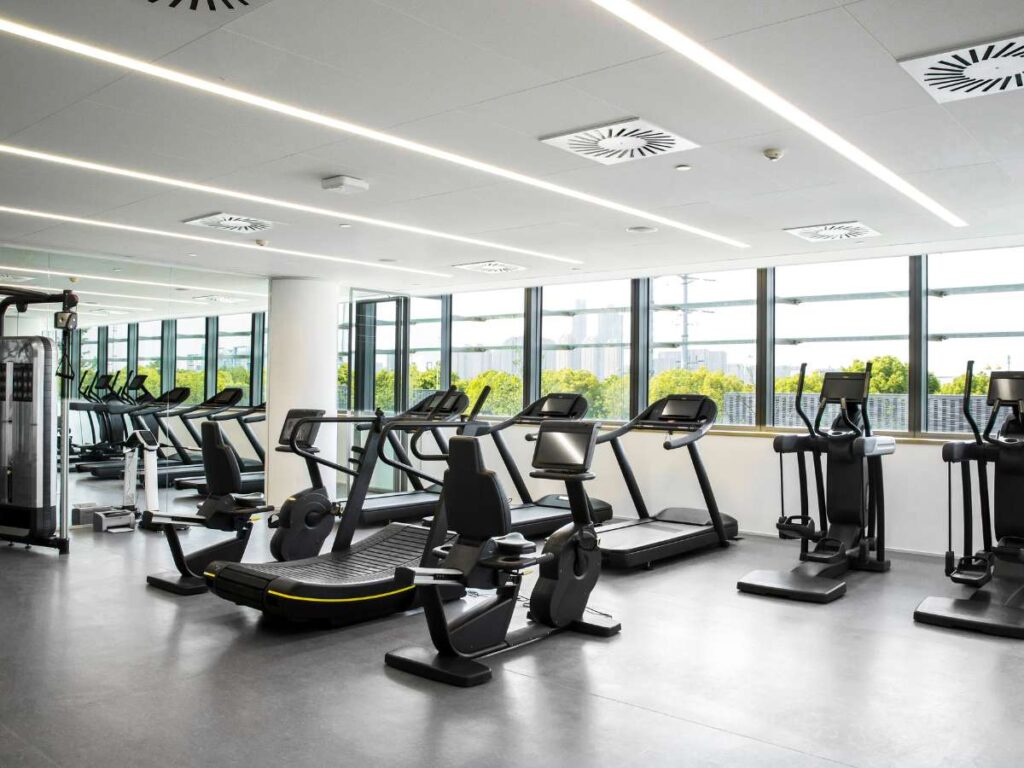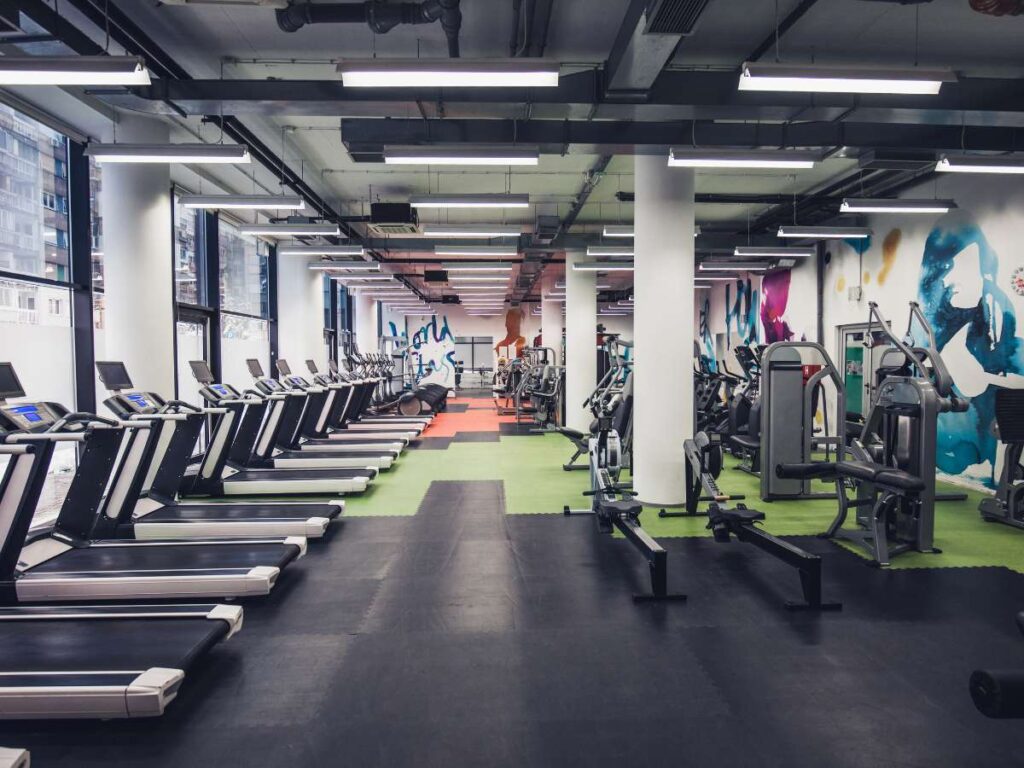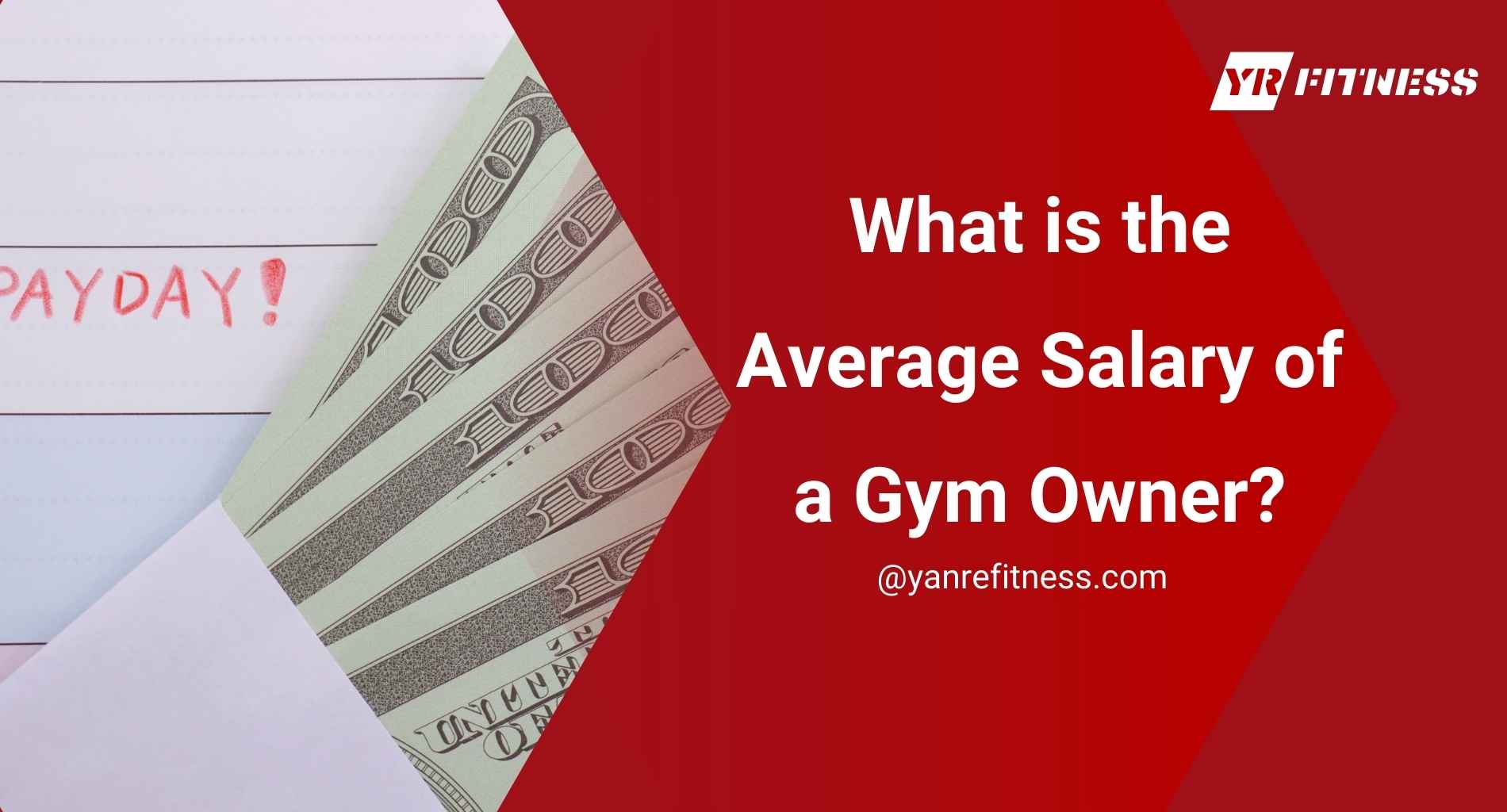What is the average salary of a gym owner? It typically ranges from $50,000 to over $100,000 per year, depending on various factors.
As a gym expert, I get asked this question all the time by those interested in starting or growing their gyms.
But don’t worry, understanding how gym owner salaries work is simpler than you might think.
In this guide, we’ll explore the different factors that influence gym owner salaries. You’ll also learn key tips to boost your earnings and run a more profitable gym.
So let’s get started!
Table of Contents
1. How Gym Owners Make Money
Gym owners have several ways to generate income that go beyond just membership fees. Understanding these income streams can help gym owners make better financial decisions and improve their overall profitability. Here are some key methods gym owners use to make money:
Membership Fees
Membership fees are the most common way gyms make money. Members pay this regular amount to use the gym’s equipment and facilities. Depending on the gym, these fees can be monthly, yearly, or even paid on a per-visit basis. And you know what? Different membership levels (such as basic, premium, or family plans) can help increase the gym’s total revenue.
Extra Services
In addition to memberships, gyms often provide extra services, such as personal training sessions, group fitness classes, or nutrition coaching. These services give members more value while creating additional income for the gym. For example, a personal training session may cost extra, but many members are willing to pay for expert guidance, which boosts the gym’s earnings.
Selling Products
Gyms can also make money by selling products like workout gear, supplements, or healthy snacks. These items are typically sold at a front desk or shop area within the gym. Having products available for purchase not only adds to the overall experience for members but also creates another steady income source.
Equipment Rentals
Offering equipment rentals is a great way for gym owners to generate extra income. Members can rent items like yoga mats, weights, or specialty machines for use at home or within the gym, creating a new revenue stream. YR Fitness provides high-quality equipment that can be easily integrated into your rental offerings, helping you boost revenue while keeping upfront costs manageable.
2. The Average Gym Owner’s Salary
The average salary of a gym owner can vary widely, depending on the size of the gym and its location. According to Push Press, the gym owner’s salary typically falls more or less $ 51,500 per year, depending on whether they own a small or large gym. A key factor in this range is the number of members and how consistently they pay for their memberships.
In areas where gyms have high demand, or if a gym is part of a popular franchise, owners typically see higher profits. On the other hand, gyms in less busy areas or those that struggle with membership retention may bring in lower salaries. Here’s the point, a gym owner’s salary depends heavily on how well the gym is managed and its local market conditions.

3. Impact of Gym Type on Owner Salaries
The type of gym you own has a big influence on how much you can earn. Different gyms have varying operational costs, membership fees, and revenue streams, all of which affect the owner’s salary. Here are some common types of gyms and how they impact gym owner salaries:
Traditional Gyms
Traditional gyms offer a wide range of equipment, classes, and services like personal training and group fitness. Because of the higher operational costs, gym owners need a large membership base to stay profitable. A traditional gym owner’s salary can range from $60,000 to $100,000 a year, depending on the location and size of the gym.

Boutique Fitness Studios
Boutique fitness studios focus on specialized fitness programs like yoga, Pilates, or spinning. These gyms are usually smaller and more intimate, which allows owners to charge higher membership fees. On top of that, boutique gym owners earn between $80,000 and $120,000 annually, with some even making more if the studio is located in a high-demand area.

Franchise Gyms
Franchise gyms offer the benefit of brand recognition and corporate support, easier to attract members. However, franchise fees and profit-sharing agreements with the parent company can reduce the owner’s take-home salary. A franchise gym owner typically earns between $50,000 and $75,000 per year, but those in larger, more successful franchises can make more.

Personal Training Studios
Personal training studios focus on 1-on-1 or small-group training sessions. These gyms are usually smaller in size and cater to clients who are willing to pay individualized attention. Because of the higher fees charged for personal training services, owners often make between $40,000 and $80,000 annually, depending on the number of clients they serve and the rates they charge.

4. Fixed and Variable Expenses Affecting Salaries
The expenses a gym owner faces play a big role in how much money they can make. Fixed expenses stay the same every month, while variable costs change based on business needs. Here are the most common fixed and variable expenses gym owners deal with:
- Rent: Rent is a fixed expense and one of the biggest costs for gym owners. Whether in a large city or a small town, rent stays the same each month but varies by location.
- Utilities: Electricity and water, are fixed expenses that are necessary. Here’s the thing: larger gyms with more equipment and members typically have higher utility bills.
- Insurance: Insurance protects the gym from accidents and liabilities, making it a fixed expense paid on a monthly or yearly basis. Insurance costs depend on the gym’s size, location, and services offered.
- Payroll: Payroll is a variable expense since it depends on the number of employees and their schedules. Adding staff can help operations but also increases overall costs.
- Equipment Maintenance: Equipment maintenance is a variable expense that can change from month to month. Regular upkeep is needed, and repairs or replacements can be costly for bigger gyms.
Below is a table that breaks down the factors influencing equipment maintenance costs and their impact on gym operations:
Factor | Description | Impact on Expenses |
Frequency of Maintenance | Regularly scheduled check-ups and minor repairs to keep equipment running smoothly. | Low to moderate impact; routine maintenance helps prevent major repairs but can add up depending on the size of the gym. |
Unexpected Repairs | Unplanned breakdowns or malfunctions that require immediate attention to avoid downtime. | High impact; sudden costs can vary greatly depending on the severity of the issue and equipment type. |
Replacement of Worn-Out Equipment | Replacing machines that are no longer functional or are too costly to repair. | High impact; replacing major equipment can be a significant expense, especially for high-end or heavy-duty machines. |
Size of the Gym | Larger gyms with more equipment naturally face higher maintenance and repair costs. | High impact; more equipment means more maintenance, leading to increased monthly variable expenses. |
Preventative Maintenance Programs | Investing in routine care and servicing to extend the lifespan of gym equipment. | Moderate impact; while these programs have upfront costs, they can save money in the long run by preventing costly repairs. |
- Marketing: Marketing is a variable cost that fluctuates depending on how much the gym spends on advertising. Some months may require higher spending to attract new members, while others may not.
5. Strategies to Increase Salary
Increasing a gym owner’s salary often means finding ways to grow revenue and manage costs more effectively. Each strategy can lead to a stronger bottom line and higher profits, which directly affects the owner’s take-home pay. Here are some of the most effective strategies to increase your salary:
Grow Membership Base
Attracting new members is one of the simplest ways to increase income. For example, by offering special promotions, referrals, or community events, a gym can bring in more people. A larger membership base means more regular revenue, which can lead to a higher salary for the owner. Sounds impressive, right?
Upgrade Equipment
Investing in high-quality equipment from YR Fitness can attract new members and retain existing ones, which helps increase revenue. Updated and reliable equipment gives your gym a competitive edge and enhances the overall member experience. By offering the latest fitness technology, you can charge higher membership fees and boost your income.
Add New Services
Offering new services like personal training, nutrition coaching, or online classes can open up new revenue streams. These extras often come with a higher price tag, giving members more options and boosting the gym’s earnings. The more services a gym provides, the more income opportunities for the owner.

Conclusion
Are you ready to maximize your income as a gym owner? Understanding the factors that impact your salary can make a huge difference in your financial success. By managing your gym’s size and expenses, you can set yourself up for long-term growth and profitability.
We hope this guide has given you valuable insights into improving your gym’s financial health. If you are looking for high-quality gym equipment to help your business grow, YR Fitness is here to support you. Contact us today to see how our top-tier products can boost your gym’s performance.
Dive Deeper Into Our Resources
For some insightful reads, we’ve curated a list of recommended articles just for you:
Still haven’t found what you’re looking for? Don’t hesitate to contact us. We’re available around the clock to assist you.
Related articles:





